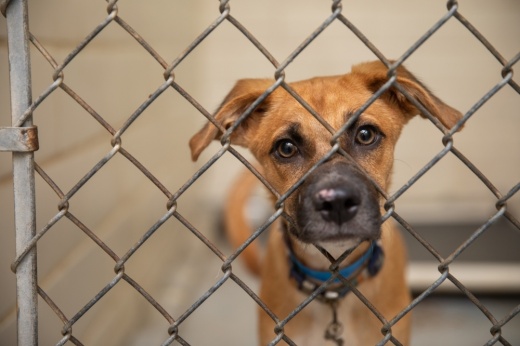The group's sixth annual report, which was released June 23, showed that of 43 animal shelters across Harris, Montgomery, Fort Bend, Brazoria and Galveston counties, 20 shelters had a 90% saving rate, meaning the rate of cats and dogs that permanently left through outcomes such as adoption, fostering or being returned to their owner.
On a countywide level, the data deemed two of Montgomery County’s three animal shelters to be “no-kill” and the county overall as “nearly no-kill” in 2020, but Fort Bend, Brazoria and Galveston counties were classified as “not no-kill.” If every shelter in the county did not report data to Best Friends Animal Society, the community was labeled as “incomplete data,” which was the case for Harris County.
These classifications were based on data from individual shelters that were then organized by county and state on the group’s online dashboard. Counties overall could be classified as “no-kill,” “nearly no-kill” and “not no-kill'' based on the individual save rates of every shelter in their area.
A no-kill status, which no county in the Greater Houston area earned, could only be achieved if every shelter in the county had a 90% or higher save rate. Lee Ann Shenefiel, south central regional director at Best Friends Animal Society, said the group uses this benchmark to distinguish between euthanasia and what they call shelter killings.
“The goal is not to end euthanasia, but to return euthanasia to the true sense of the word, which is for animals that are irremediably suffering, beyond what care can provide for them, or animals that cannot be rehabilitated and are too dangerous,” Shenefiel said. “What we have learned as a movement is that those animals, generally speaking, don't account for more than 10% of shelters intakes.”
For every shelter below a 90% save rate, the study calculated a no-kill gap, or the number of additional dogs and cats they would have needed to save in 2020 to reach that threshold. A county’s overall no-kill gap is the sum of every individual no-kill gap in its area.
Montgomery County had a no-kill gap of 52, with two of its three shelters being no-kill. Meanwhile, Fort Bend, Brazoria and Galveston counties had gaps of 307, 405 and 308, respectively. The three counties all had at least one shelter with a save rate lower than 85%, keeping these counties from earning an overall no-kill status.
Based on the 17 of 21 shelters in Harris County that provided euthanasia data, the county would have had to save 1,460 animals to reach a 90% no-kill rate. Additionally, Pasadena Animal Shelter had the lowest reported save rate in Harris County, with 65% of the 4,139 animals that entered the shelter being saved. Ten of the county's shelters were no-kill, including Harris County Pets and BARC Animal Shelter and Adoptions. Shenefiel said the pet advocacy group believes reaching their life-saving goals takes effort by shelters as well as the community, like taking lost pets to vet clinics to reunite them with their owners or waiting to see if the mother returns for stray kittens first before taking them to a shelter.
“Shelters don't have all the resources and will never have all the resources to provide for every animal or ameliorate every animal situation in the community,” she said. “It takes the shelter doing their part to have good programs and processes in place, but they need the help of the community.”
Despite Texas' life-saving gaps, the state overall has made progress compared to previous years, with the statewide save rate having increased from 76.7% in 2019 to 81.6% in 2020, according to the news release. Texas had a 78% reporting rate, with 308 of its 395 shelters represented.
“One of the bright spots of 2020 is that we've seen huge life-saving gains,” Shenefiel said. “Shelters asked their community for help. Shelters have historically not always been transparent and have oftentimes been nervous about reaching out to the community and asking for things because there's so much stigma around life-saving rates.”




